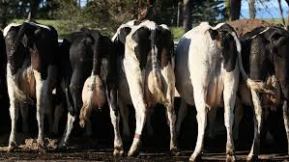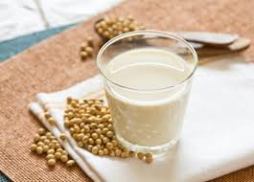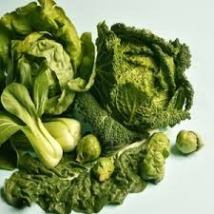It was National Healthy Bones Week on August 4th-10th 2013, a week that aims to increase the awareness of the role calcium rich foods, predominantly dairy foods play in the development of strong healthy bones. Now personally I love dairy foods. I enjoy milk for recovery after training, enjoy the satiating qualities that yoghurts poses for a PM snack (the full fat type) and can’t go past a lovely cheese platter over a catch up with friends. However, many do not share this same love.
Eight out of ten adults do not meet the recommended number of servings of dairy (or dairy alternatives such as soy products) a day as outlined in our Australian Dietary Guidelines.
I am very much aware that many people need to avoid or limit dairy foods due to intolerances or personal dietary preferences. Others just do not share the same view when it comes to the health benefits of dairy foods. The many reasons that people may or may not include dairy in their diet are very contracting which makes it very confusing for people trying to eat for health.
Because of this, I asked friends and family via social media what they wanted to know about dairy foods and bone health and why some may avoid this whole food group. Many wanted to know how they can get enough calcium through non-dairy sources, some wanted to know whether full fat or low fat was best and some were avoiding because of a fear of weight gain.
This led me to explore some of the views and evidence of the pro-dairy faction and have a look at other science-based views and most importantly determine how everyone can get enough calcium in their diets.
But let’s not forget that this all came about because of National Healthy Bones Week and calcium is just one piece of the puzzle.
The healthy bones puzzle
Building healthy bones is an area of our health that isn’t talked about a lot, especially during the crucial ages for bone building (our teenage years) when focus may be on eating for weight versus eating for health and wellness.
It is important to piece each part of the puzzle together to build healthy bones. This puzzle involves three main pieces including adequate dietary calcium intake, adequate vitamin D (which many of us are deficient in) mainly from sunshine and regular bone strengthening exercise such as jogging, brisk walking, balance exercises and resistance exercise.
The role of calcium
Most people know that calcium is important to help build healthy teeth and bones. This occurs when the calcium deposits as a crystal onto our bones to give them their hard strength. Our body also requires calcium to help transmit nerves, regulate the hearts rhythm and assist with blood clotting. But remember, our bodies can't use calcium without adequate vitamin D.
Our body gets calcium through the foods that we eat. It can also borrow calcium from our bones when our blood levels start to drop to low. If this is not replaced our bones will lose their strength. So it’s pretty safe to say we need calcium in our diets!
While no one is questioning the important role of lifelong calcium intake for the health of our bones, the debate comes down to just how much calcium do we really need and what are the best sources of calcium in our diets?
When we sort through the opinion and look closely at the evidence, there’s no ‘final answer’ on how much we need. But here is what we know about calcium, food sources and what our current recommendations are.
How much calcium do we need?
The Australian recommendations suggest that children require 500mg-1000mg, teens require 1300mg and adults require 1000mg-1300mg of calcium a day depending on their age and gender.
How to meet these recommendations
The new Australian Dietary Guidelines recommend 2 ½ - 4 serves of dairy foods a day for adults (depending on their age) to help meet calcium requirements and gain additional health benefits from dairy foods.
A serve of dairy contains approximately 350-450mg of calcium per serve with one serve equating to:
- 250ml of cows milk
- 250ml of soy milk (with at least 100mg of added calcium per 100ml)
- 200g of yoghurt
- ½ a cup of ricotta cheese, or
- 40g of cheese.
The list is endless when we think about how we can include these foods in our diets. Think:
- milk after exercise
- Greek yoghurt on curries
- ricotta cheese in salads, and
- plain yoghurt with fruit for dessert.
The Great Dairy Debate
Although the new Australian Dietary Guidelines are based on scientific evidence, some groups question if we really need this much calcium, particularly from dairy foods for bone health. However, contradictory studies only show correlation, not conclusive evidence that would alter the guidelines.

Weight, diabetes and heart disease risk
Consuming calcium through dairy foods may offer benefits beyond bone health including lowering cardiovascular disease risk, reducing fat mass, increasing lean muscle mass and potentially reducing the risk of type 2 diabetes. There is also no evidence to suggest that enjoying the recommended serves of dairy foods increases total weight and waist circumference (it could in fact improve it). These benefits may be due to complex structure of dairy foods including the role of calcium binding to the fat, the presence of additional vitamins and minerals and the type of fats present in dairy foods. In regards to milk and yoghurts, they have satiating qualities due to their low glycemic index (GI) and protein content, meaning you feel fuller for longer, which may mean there is no need to reach for other energy dense/nutritionally poor snack foods such as biscuits, crackers and snack bars.
Full fat or low fat?
Early studies also suggest that there is no difference between low fat and full fat dairy foods when we look at these health benefits.
So as far as I’m concerned, I will continue to enjoy my 2-3 serves of dairy a day and encourage the people around me to do the same. If people have cut out dairy because they do not like the taste of the low-fat variety I would encourage them to put the full fat type back in, as long as its in the presence of a healthy diet that is adequate for their energy budgets. If your not sure always check with an Accredited Practising Dietitian.

Dairy alternatives for calcium – soy, rice and almond products
Dairy alternatives include soy, rice and almond products. Some people prefer these alternatives because of a lactose intolerance or personal dietary preference (if a lactose intolerance is a concern there are now fresh and UHT lactose free milks available in all supermarkets, which are a great source of calcium).
It is important to choose calcium fortified (added calcium) dairy alternatives. Calcium fortified soy milks and cow’s milk have a similar calcium content per serve. However, fortified almond and rice milks are generally much lower in calcium (approximately 180mg versus approximately 350mg of calcium per 250ml serve) and many almond and rice products are not fortified.
Food is complex and it’s not just the nutrient content of a food that is important to consider, but how our body will use this nutrient.
Our bodies tend to use the calcium from dairy foods more effectively compared with some dairy alternatives. If dairy alternatives are fortified with calcium phosphate, the calcium absorption is generally 75% of the absorption from cow’s milk. If products are fortified with calcium carbonate the absorption is equivalent to cows milk. You can check the fortification method by reading the ingredients list on the label.
Some people worry about having a high intake of soy products. The Cancer Council of Australia have published a position statement that support the use of soy products in the diet, however warn women with existing breast cancer or past breast cancer to be cautious in consuming large quantities of soy foods or phyto-oestrogen supplements.

Fish sources
Calcium can also be found in fish with edible bones such as sardines (489mg per 90g serve) and salmon (279mg per 90g serve), which are absorbed well. These sources of oily fish also contain omega 3 fish oils and vitamin D and are great foods for building healthy bones.
Vegetable sources
Many people believe they can get enough calcium through vegetable sources, especially with vegetables such as kale that is becoming increasingly popular.
However, the amount of calcium per serve of these foods is quiet low and the absorption of the calcium is questionable. The absorption of calcium from almonds (30mg for 10 almonds), legumes (43mg per cup of baked beans) and dark green vegetables such as kale (100mg per cup) and broccoli (15mg per 2 florets) depends on the phytate content. Phytate is a plant compound that blocks the absorption of calcium in the gut.
Oxalates, another plant compound, also block the absorption of calcium. Although spinach has been labeled a good source of calcium in the past it should not even be considered as a source of calcium because of its oxalate content.
Although some of your favourite green leaves may not be as calcium rich as once thought, they do contain vitamin K, which has been shown to give some assistance in building healthy bones.

Final notes
- If you rely on vegetable sources to meet your calcium needs you may not be getting as much as what you initially expected.
- Consider including some calcium fortified soy products (seek advice if you have a existing or past breast cancer diagnosis) if you choose to leave dairy out of your diet.
- For all of those dairy lovers, continue to include milk, yoghurt and cheese in your diet for various health benefits beyond bone health.
- If you have cut out dairy because you don't like the taste of low fat dairy, put the full fat dairy back in making sure you have a healthy balanced diet that is appropriate for your energy budget.
First seen at www.motherpedia.com
Images are not my own.
Related articles
- Can a glass of milk help you lose weight? (bestnutrition4u.com)
- Calcium-rich diet may reduce female mortality (medicalnewstoday.com)
